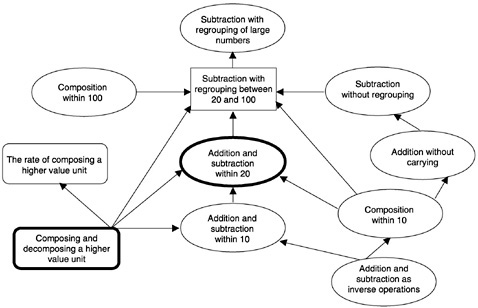I was in Prague for a great weekend course on play-based learning this weekend, with Estelle as we're both moving to Kindergarten in September. We also got to explore the beautiful city a bit in the evenings, and Estelle was very indulgent when I kept suddenly stopping in my tracks to snap the amazing paving patterns all around.
I was looking forward to trying these out with my Year 4s. I was not disappointed.
This one first, with us all in front of the whiteboard: What mathematical questions could you ask about it?
So, look for a while at it. How many squares in the black cross?
OK, 33. Look again, if you didn't get 33, and work it out to see that it's 33.
How did you see that?
A good crop of answers. So now on to some individual work. How many squares in the black star? And communicate how you work this out.
There were a few slips here and there, but the good thing is, everyone had a clear idea about the task, and everyone was trying to cut their own path through. It's what our quick image tasks are really good for - "it's over to you - find your own way through!"
And there were so many different ways! This seems so much healthier for students' adaptability and independence than the One-Ring-To-Rule-Them-All approach to calculation and algorithms.
Martin Joyce made me aware that the Patterns of Prague were already a maths thing:
@Simon_Gregg @estelleash awesome. There's a Mars task called patterns of Prague. https://t.co/5P6XJmJc8j— Martin Joyce (@martinsean) June 5, 2016
And Danny Brown, when he saw what we were up to, tweeted:
Here's more of that article:@Simon_Gregg brings to mind this from 'approaching arithmetic algebraically" MT163 @ATMMathematics @journaleditor6 pic.twitter.com/cEmqd5ttpt— danny brown (@dannytybrown) June 7, 2016
There is a difference between counting and watching yourself counting. It is observing how you count, rather than just counting, which leads to statements about counting, such as 6 X 5 + 6 X 5, or l(w+ l)+w(l+l). An algebraic statement about the number of matches used to create an n by n square, or an I by w rectangle comes from finding a way of counting. A certain awareness is required to be able to count the matches, but a second level of awareness is needed to observe and articulate how that counting is being carried out. It is a double level of awareness - awareness of awareness which is required for you to be in a position to write an algebraic statement. John Mason has talked on several occasions about the following from the Rig Veda:
Two birds, dosed yoked companions,
both clasp the same tree.
One eats of the sweetfruit,
the other looks on without eating.
It is awareness of awareness which is involved in working algebraically. Arithmetic is concerned with the result there are 60 matches. Algebra is concerned with organising the counting, finding a structured way to get the result. To be able to count requires a way of counting, a way of structuring and organising the counting. To be able to count requires you to work algebraically.
Approaching Arithmetic Algebraically, Dave Hewitt,
Mathematics Teaching 163
So, these quick images foster independence, a focus on contemplation and communication as much as calculation, and algebraic thinking. Give one a try!









































































